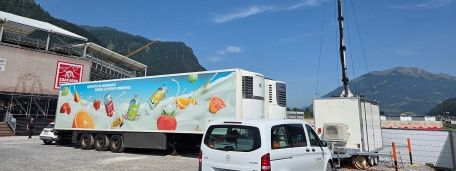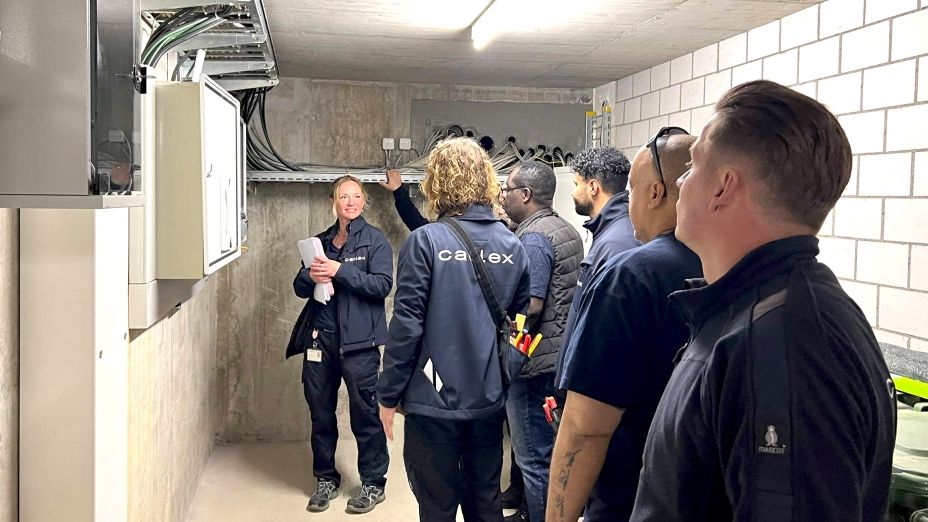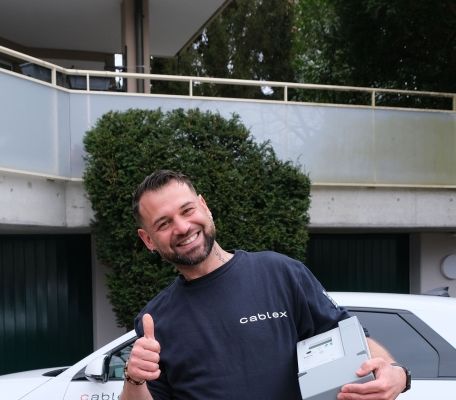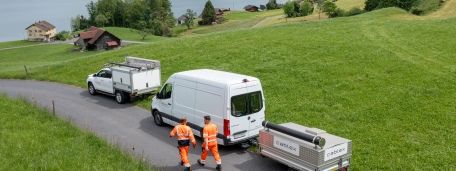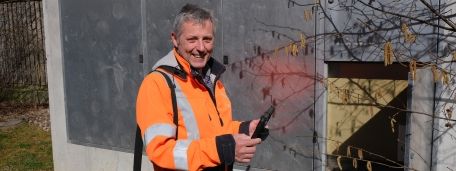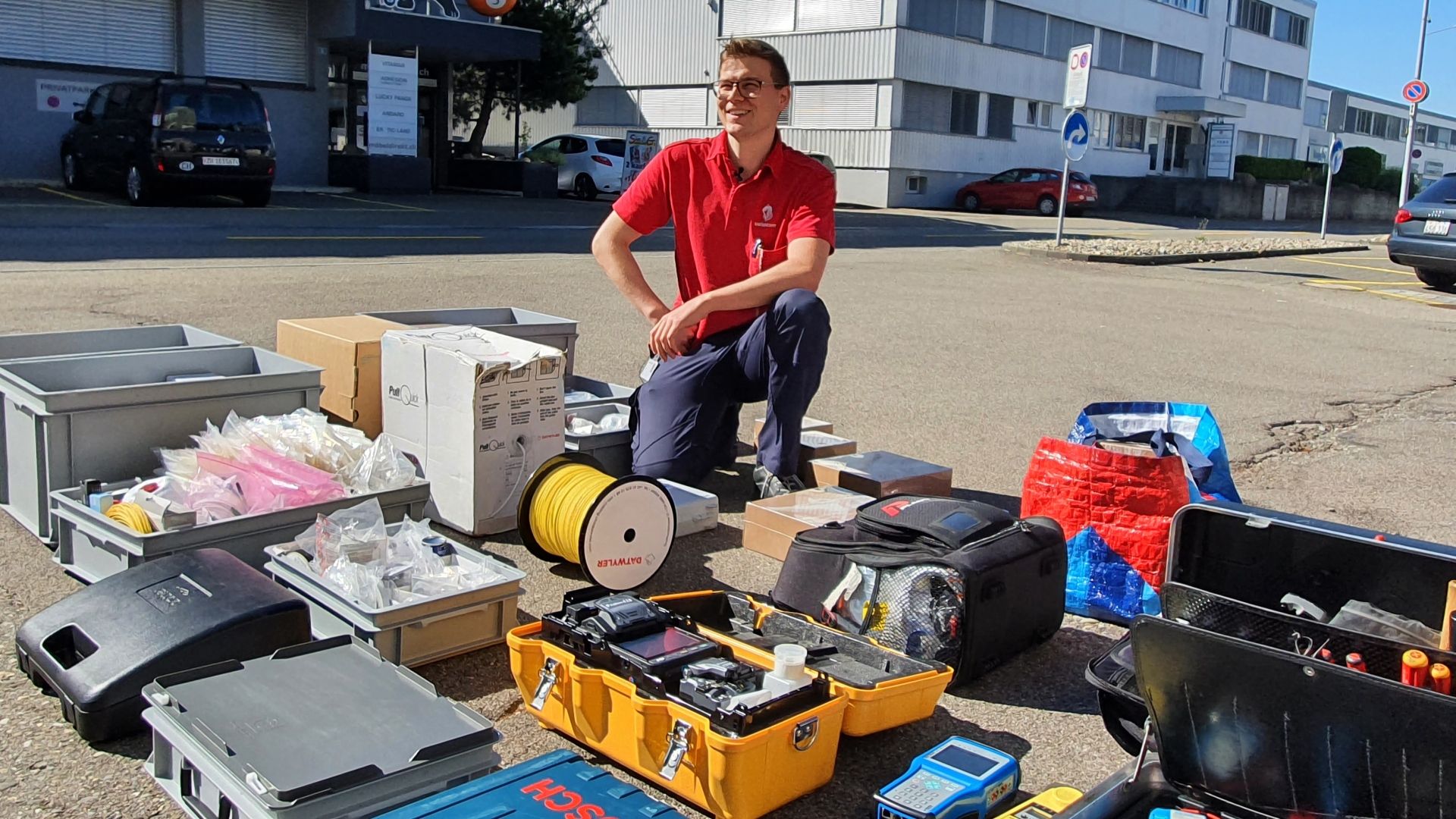
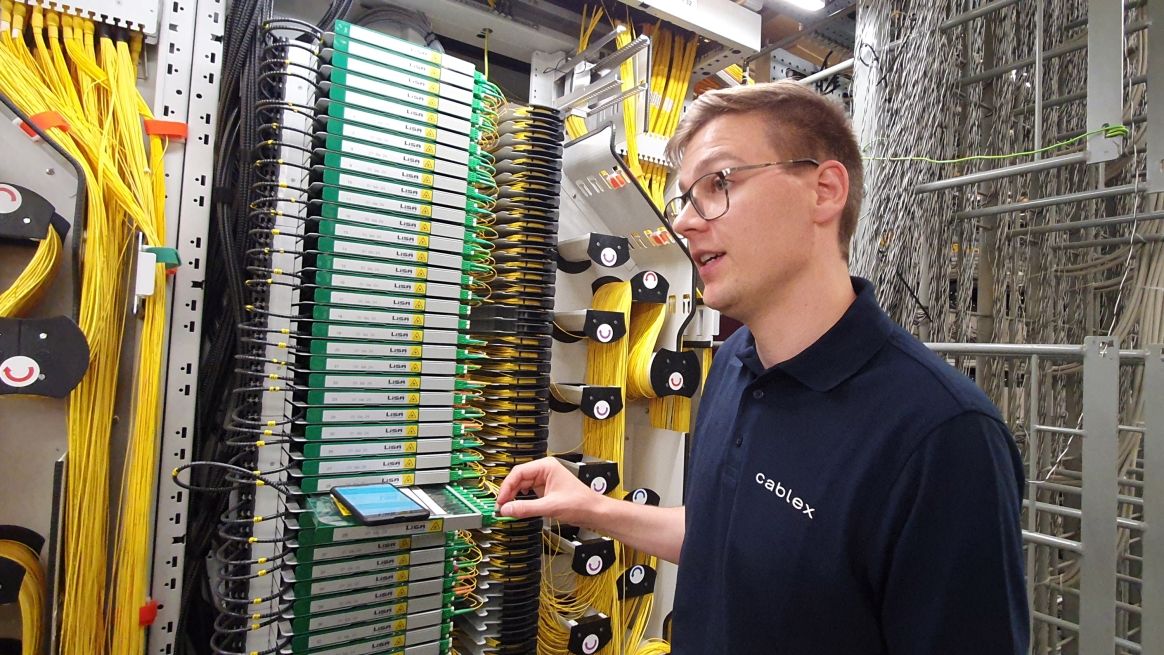
Troubleshooting the copper connection.
Kilian Laib is an ICT technician at cablex. He’s part of the Field Services unit that is in direct contact with the end user. He’s always on-hand with his knowledge when a customer asks for support. I was given the chance to look over Kilian's shoulder for a day, while he worked in the field:
Kilian greets me in front of a Swisscom control centre in Dietlikon. We make our way to the first customer together. All the while, I'm a little tense at the thought that, in a few minutes, I'll be enter the flat of a complete stranger who is a Swisscom customer. "Who and what awaits us? Hopefully not an angry customer," I think. Kilian, on the other hand, is totally laid back. Customer visits are run-of-the-mill for him. He intently provides me with information he already has:
"It's a problem on a copper line (FTTC), the technology is VDSL2 Legacy, the provider is Swisscom. After returning from holiday, the customer, Ms. T, noticed that she was having problems with the TV and then contacted Swisscom First Level Support. There, they used remote measurements to determine that there was a fault in the connection and made an appointment with the customer to fix the problem at her home."
A few minutes later, we’re standing in front of Ms. T's front door. Smiling, she opens the door; her dog greets us with a wagging tail. I’m admittedly relieved at the friendly atmosphere. We take off our shoes and enter (under observance of the measures to protect against coronavirus) the customer’s living room.
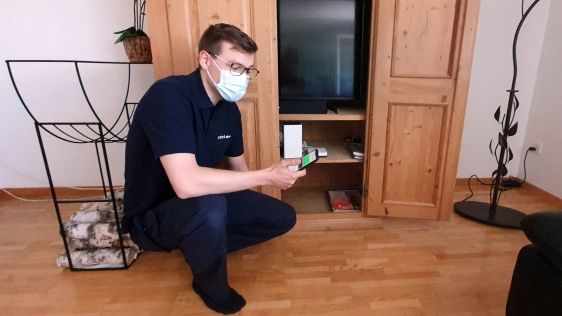
Kilian listens attentively to Ms. T and informs her about his work steps. Then he begins testing the connection box right away. His measurements show no error at all. Finally, he says: "The signal up to the socket is fine. It’s the old and oxidized TT83 socket that’s causing the problems. The outages are caused by a bad contact (loose contact) between the DSL cable plug and the socket," explains Kilian to Ms T.
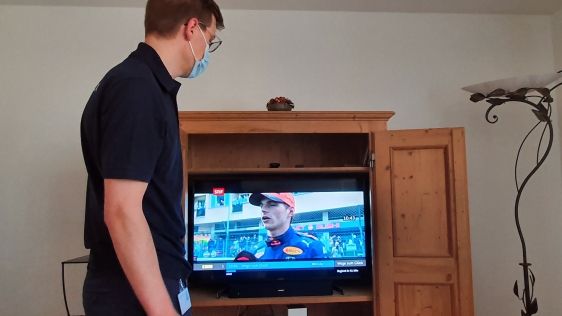
The customer agrees to Kilian replacing the socket with a newer model. Once that's done, he puts the router back into operation. He tests the internet connection and the TV – everything works. Ms. T is happy, we say goodbye and moments later we’re back in the car. Before the next customer visit, we first have to go to Swisscom headquarters to check transfer connections....
"The Internet is just unstable."
Mr. S. has a optical fibre connection to the flat (FTTH). This was developed with the new splitter technology XGS-PON, the provider of the service is Salt. The customer reported to Salt that his internet connection kept dropping out. For customers with an optical fibre connection to the home, the signal strength in the section between the control centre and the OTO box is measured first.
Although I have been to Swisscom headquarters several times, I’m always impressed by how large and innumerable these masses of cables and connections are. I have no idea how we’re supposed to find the connection here now, which also provides the S. family with a signal. A few stairs, corridors, doors and hallways later, Kilian routinely guided me through the maze. I'm impressed.
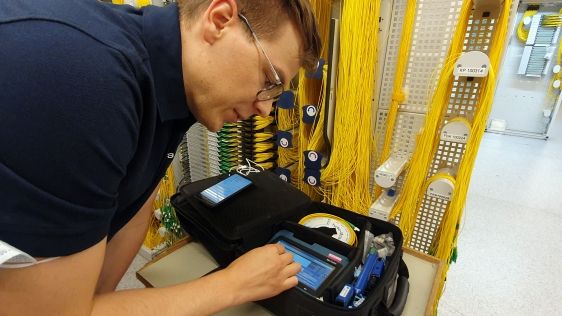
In the control centre, Kilian measures (among other things) the total attenuation over the course of the optical fibre cable as well as "all events" between the two end points of the Fox cable section, such as splices, connectors, splitters or cable defects." He also measures the strength of the signal (signal level) and compares it with the specified limit values. Kilian's conclusion: "No faults were detectable in the control centre.”
Then he visits the customer to get to the root of the problem on site. Again, we are lucky: The customer is friendly and happy that Kilian is taking care of the internet connection. But it’s clear that Mr. S is tense. He and his wife work from home, so they rely on having a stable, fast internet connection. I can understand them, I would feel the same way.
At the OTO socket, which this time is located in the storage room, Kilian again took a measurement. He detects a very high attenuation (>15 dB) after a very short distance. In addition, the signal level was very weak (-25 dBm). He then opens the OTO socket. Using a video microscope, he inspects the front surface of what is called a pigtail connector. It’s a little dirty and needs to be cleaned. However, this doesn’t solve the main problem.
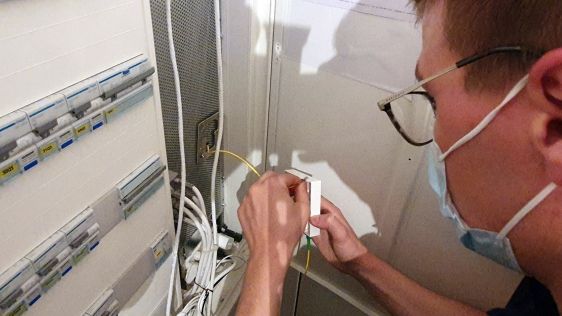
Therefore, Kilian next task is the OTO socket in the network distribution cabinet. He immediately recognises that the in-house optical fibre cable was squeezed when the OTO socket was installed, which causes high attenuation at this point.
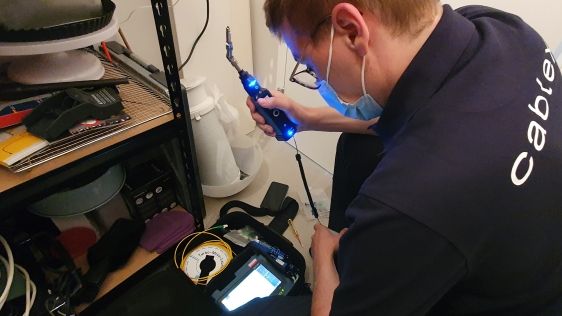
Kilian skilfully smooths out the squeezed optical fibre cable again. He also slightly offsets the OTO socket so that the optical fibre cable runs in a bigger bending radius in the future. A new measurement shows no more abnormalities, and the signal level is now also OK (-15.5 dBm). The S. family can now work in their home office again without any outages.
My day in the field is over at this point; for Kilian, it's time to head off to the next customer. After these four hours, I realise that all customers have something in common: The expectation that our technical staff will solve the problem – and solve it right away. First and foremost, one has to be able to deal with this pressure.
We can be really proud of our colleagues who are wholeheartedly on the road every day, giving their all in the service of customers. This requires a lot of empathy. But we’d also like to emphasise once again the cooperation between the various teams at cablex. Everyone is ready to go and tackle issues together. This is what sets cablex apart and also reflects our values in our daily work.


